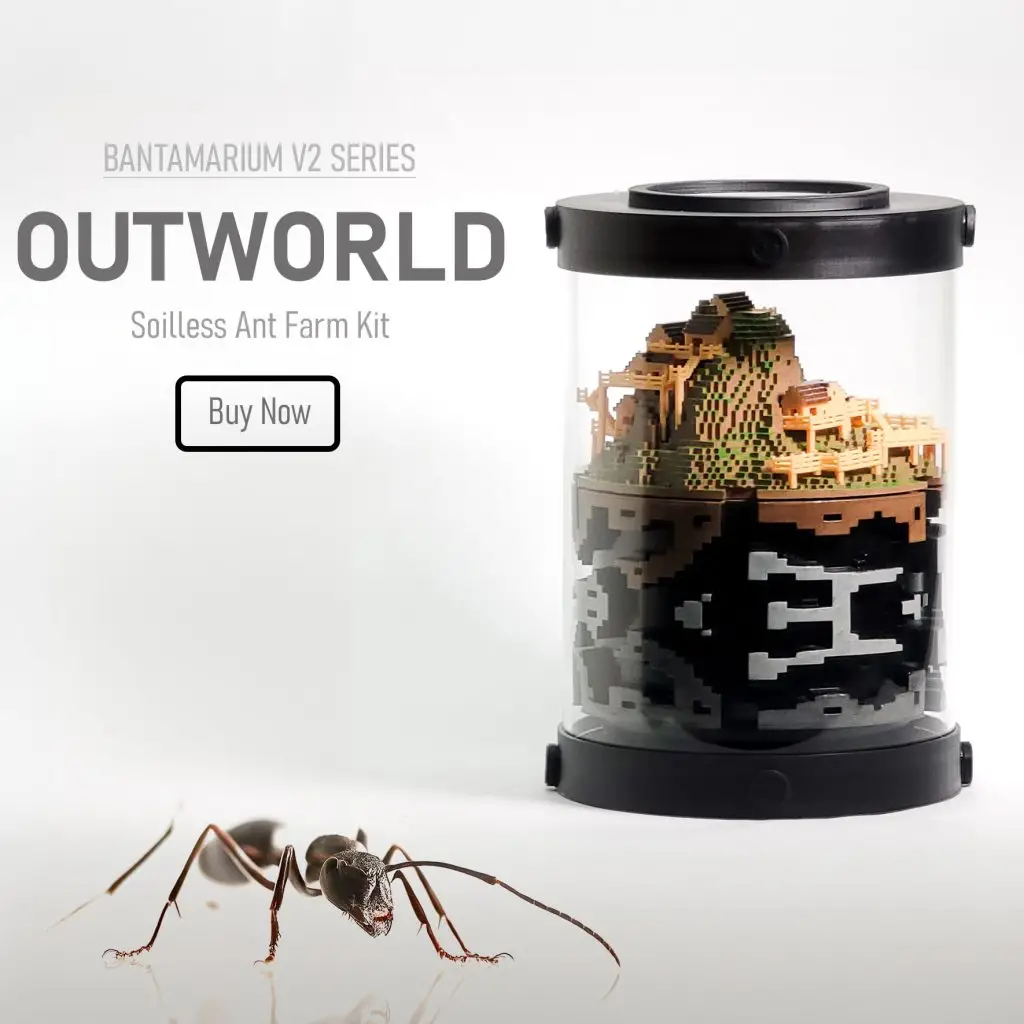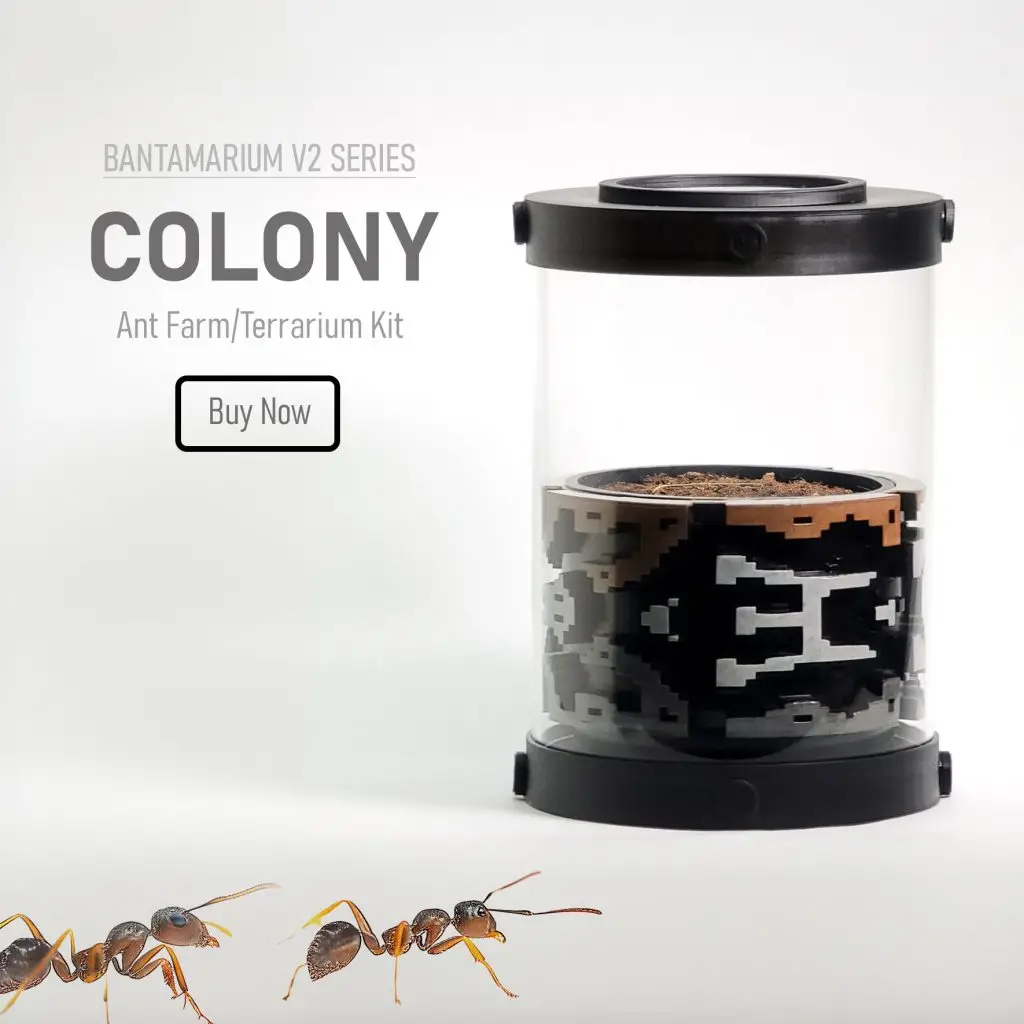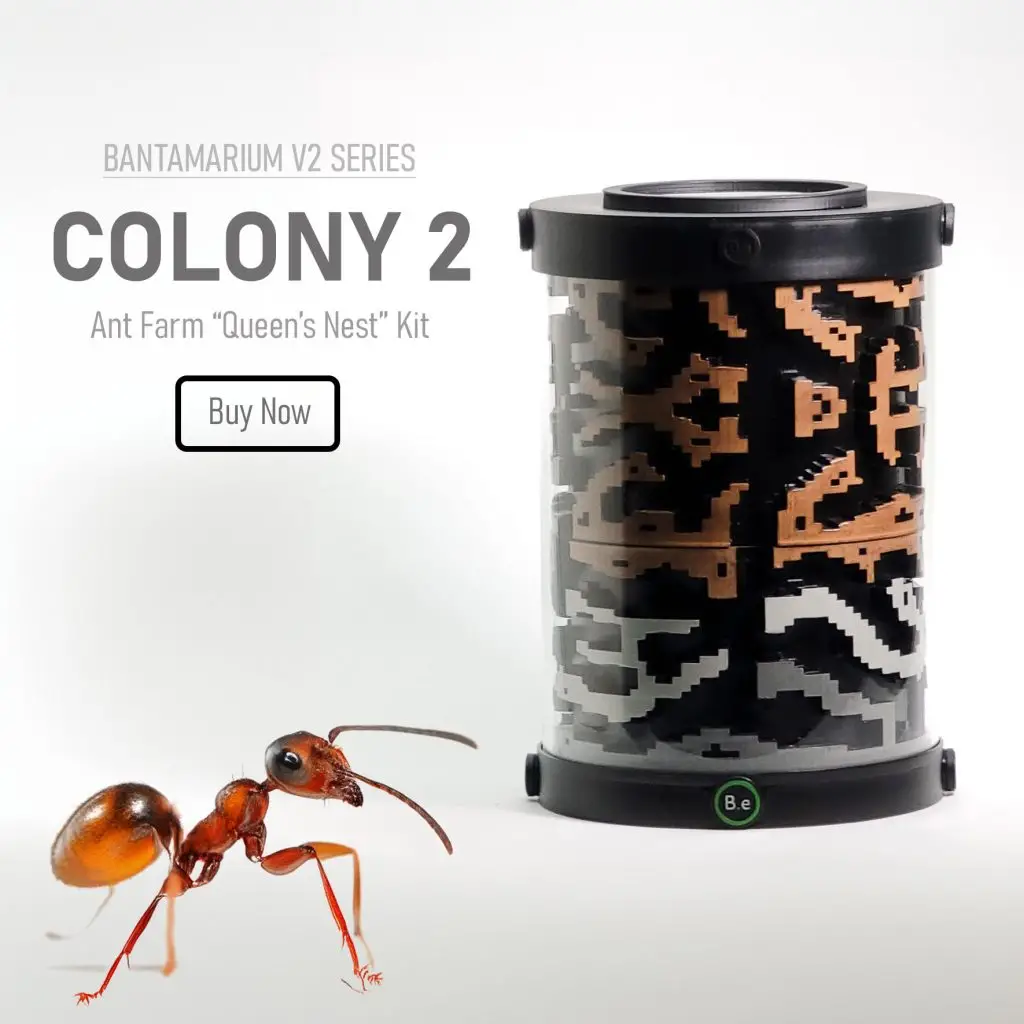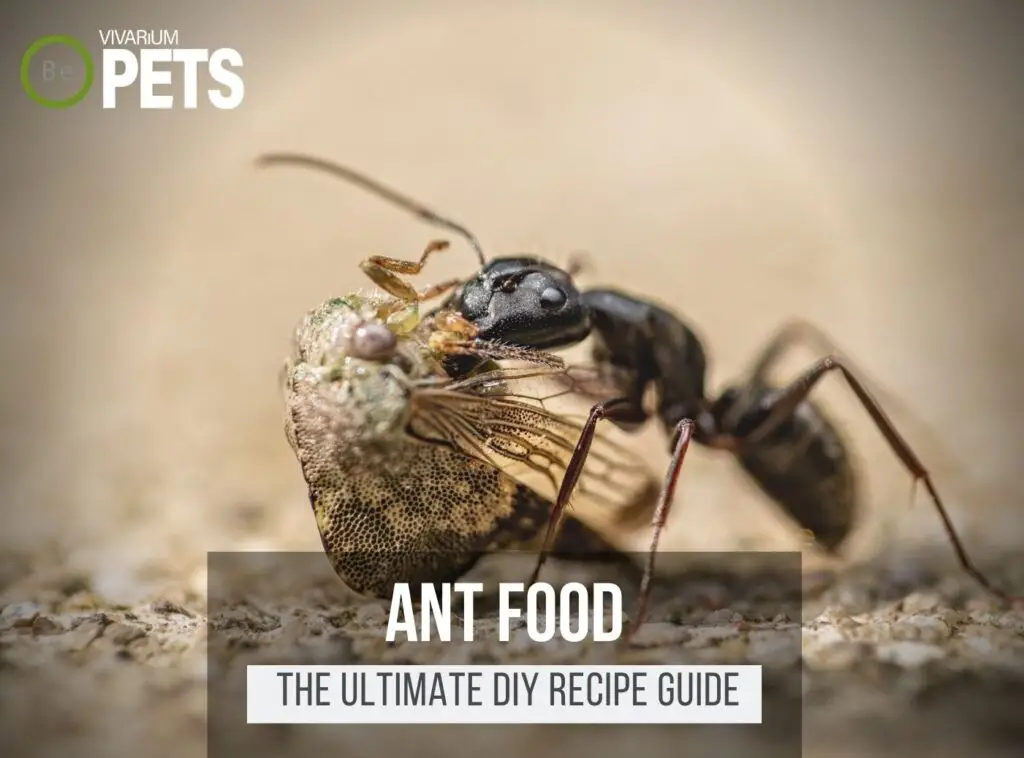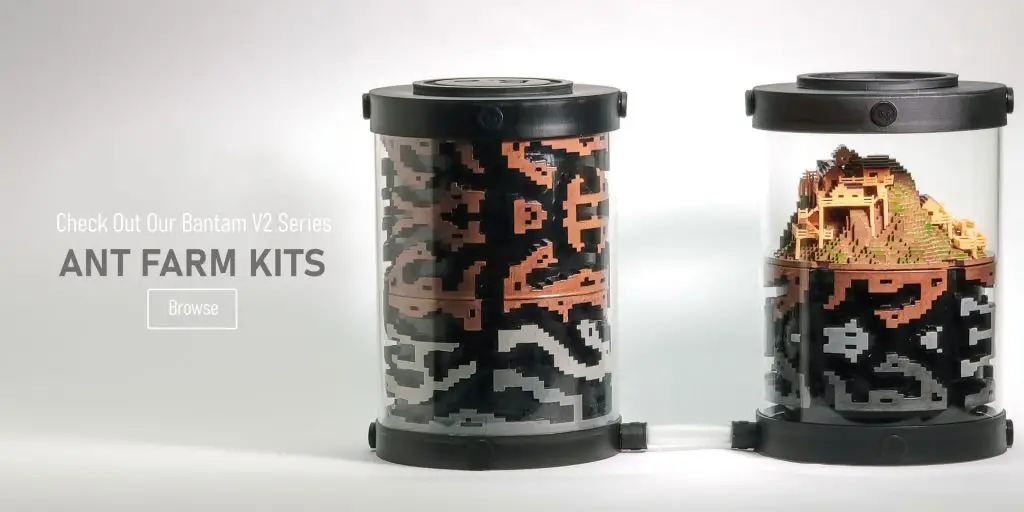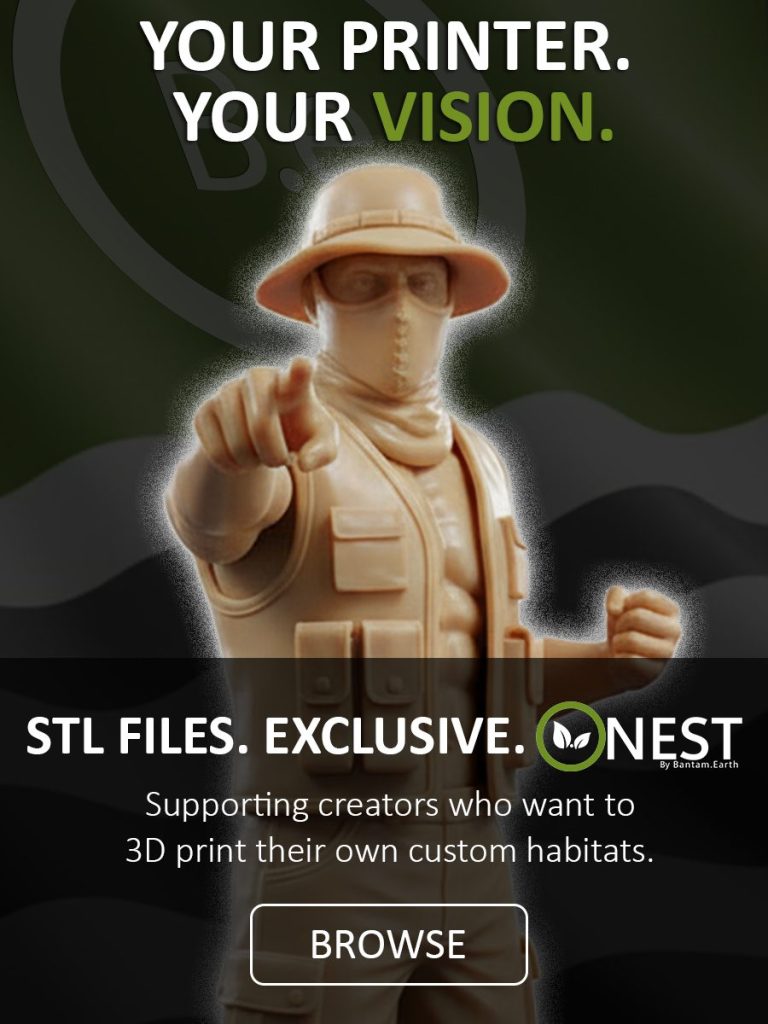Welcome to the most masterfully crafted guide on Pharaoh Ants, one of the many intriguing ant species you can keep as pets!
Known for their tiny size and remarkable adaptability, Pharaoh Ants are a popular choice among ant enthusiasts.
In this comprehensive care guide, we’ll dive into everything you need to know to provide the perfect home for these industrious insects.
From understanding their unique needs to creating an ideal environment, we’ll equip you with all the knowledge to ensure your Pharaoh Ant colony thrives.
Table Of Contents:
ToggleWhat Are Pharaoh Ants?
Pharaoh Ants (Monomorium pharaonis) are small, yellow to light brown ants belonging to the family Formicidae.
These ants are known for their diminutive size, with workers ranging from 1.5 to 2.0 mm long.
The name “Pharaoh Ant” originates from their historical association with ancient Egypt, where they were found in archeological sites, and their reputation for being a persistent pest in human habitats.
Despite their small size, they are highly adaptable and have become a common sight in households and buildings worldwide.
Their ability to establish colonies in various environments makes them a fun species for study and observation in enclosures.
Create an ideal habitat for your ant colony with our Customizable Ant Farm Terrarium Kits, which include everything you need to get started.
What Do Pharaoh Ants Look Like?
Monomorium pharaonis are notable for their small size, making them one of the tiniest ants commonly encountered.
Workers measure between 1.5 and 2.0 mm in length, with queens being slightly larger.
Their coloration varies from yellow to light brown, giving them a somewhat translucent appearance.
This subtle hue is due to their exoskeleton, which lacks the intense pigmentation found in some other ant species.
Anatomically, Pharaoh Ants have a distinct and delicate appearance. Their heads are small and rounded, with relatively large, prominent eyes compared to their overall size.
The antennae are segmented and bend at a noticeable angle, aiding in their sensory perception.
The thorax is smooth and evenly rounded, lacking spines or other protrusions, which contributes to their streamlined look.
Their legs are slender and long, enhancing their agility and ability to navigate tight spaces.
The abdomen is oval and smooth, segmented into several distinct rings, which aids in flexibility and movement.
The combination of these features makes Pharaoh Ants highly efficient foragers and adaptable to various environments.
Benefits Of Using Pharaoh Ants
Monomorium pharaonis offers several benefits when used in formicariums, making them valuable additions for both hobbyists and researchers.
Firstly, their small size allows them to thrive in compact enclosures, making them ideal for vivariums of varying sizes.
Their ability to adapt to confined spaces means they can be kept in smaller setups, where other larger ant species might struggle.
This makes them particularly suitable for smaller or more intricately designed vivarium setups.
In addition, Pharaoh Ants are known for their interesting social behaviors and complex colony structures.
Observing their interactions, foraging patterns, and colony dynamics can provide valuable insights into ant behavior and social organization.
Their colonies typically consist of multiple queens, which can lead to fascinating studies of queen dynamics and colony management.
Pharaoh Ants also play a role in maintaining the ecological balance within vivariums.
They are efficient scavengers and help in breaking down organic matter, which can contribute to the health of the vivarium’s ecosystem.
Consuming a variety of food sources, including proteins, sugars, and fats, they help simulate a balanced food web and manage waste.
Moreover, their adaptability to different environmental conditions allows for a diverse range of vivarium setups.
Pharaoh Ants can thrive in various humidity levels and temperatures, making them flexible inhabitants for different types of vivariums.
This adaptability ensures they can be integrated into many different habitats without requiring overly specific conditions.


Pharaoh Ant Facts
Monomorium pharaonis are small, yellow to light brown ants known for their adaptability and resilience.
Their natural diet includes proteins, sugars, and fats, allowing them to thrive in diverse environments.
These ants have a long lifespan for their size, with workers living up to a few months and queens potentially surviving several years.
They breed prolifically, often forming large colonies with multiple queens, which contributes to their success in both wild and captive environments.
Habitat
Pharaoh Ants have an origin rooted in the subtropical regions of Africa, with their presence also noted in parts of the Middle East and Asia.
Their natural habitat typically consists of warm, humid environments that offer a constant supply of food and shelter.
In the wild, these ants are commonly found in decaying organic matter, such as leaf litter and wood, where they establish their nests in the soil or under debris.
Historically, Pharaoh Ants are thought to have spread from their native tropical and subtropical regions through trade and human activity.
Their ability to adapt to various environments has allowed them to become a widespread species, particularly in urban areas where they can exploit indoor environments.
They are often found in buildings and homes, where they nest in hidden locations such as wall voids, under floors, and inside insulation materials.
In their native habitats, Pharaoh Ants thrive in environments with high humidity and moderate temperatures, conditions that mimic the climate of their original range.
Their adaptability has enabled them to colonize a wide range of environments beyond their native regions, making them a common sight in many parts of the world.
Their successful adaptation to diverse conditions is a testament to their resilience and versatility as a species.
Replicate their natural habitat perfectly with one of our new Signature Biotype-Specific Substrate Mixes, designed to provide the ideal moisture and organic content for your ants.
Diet
In their natural habitat, Monomorium pharaonis exhibit a diverse diet that reflects their opportunistic feeding behavior.
They are omnivorous and consume a wide range of organic materials, which enables them to thrive in various environments.
Their diet primarily consists of proteins, carbohydrates, and fats, which they obtain from sources like insects, other arthropods, and decaying plant material.
Pharaoh Ants are known to forage extensively for food, and their diet includes small invertebrates such as mites, beetles, and other ants, which provide essential proteins for their growth and colony maintenance.
They also feed on sugary substances like nectar, honeydew from aphids, and overripe fruits, which supply the necessary carbohydrates for energy.
Additionally, these ants can consume fats and oils from various sources, contributing to their overall nutritional intake.
Temperament
Monomorium pharaonis are generally known for their small size and relatively mild temperament, especially in comparison to more aggressive ant species.
These ants are not typically aggressive towards humans and usually do not pose a significant threat or cause serious harm.
Instead, they are more inclined to avoid confrontation, opting to retreat rather than attack when disturbed.
However, their small size does make them difficult to detect and manage, especially when they invade indoor environments.
In their interactions with other animals, Pharaoh Ants are opportunistic feeders and may compete with or prey on other small arthropods, but they do not generally exhibit aggressive behavior toward other species outside their colony.
Their primary focus is on foraging for food and maintaining their colony rather than engaging in aggressive territorial disputes.
Lifespan
Monomorium pharaonis has a relatively short lifespan compared to some other ant species.
Workers typically live for about 8 to 10 weeks, although their exact lifespan can vary based on environmental conditions and availability of food.
Queens, on the other hand, have a significantly longer lifespan, often living for several months under optimal conditions.
The queen’s longevity is crucial for the colony’s survival, as she is responsible for laying thousands of eggs throughout her life.
The life cycle of Pharaoh Ants begins with the queen laying eggs. These eggs are small and white, and they hatch into larvae after about a week.
The larvae undergo several molts as they grow, eventually transforming into pupae. During the pupal stage, the ant undergoes metamorphosis, developing into its adult form.
This stage lasts about 10 to 20 days. After emerging as adults, Pharaoh Ants quickly begin their roles within the colony, with workers taking on tasks such as foraging, caring for the brood, and maintaining the nest.
Breeding
Monomorium pharaonis have a complex mating and reproductive system that allows them to rapidly establish and spread colonies.
The mating process begins with nuptial flights, which occur when queens and males leave their colonies to mate.
These flights usually happen during warm and humid conditions, typically in late spring or summer.
During these flights, male Pharaoh Ants, which are winged, will swarm around a queen, also winged, and engage in mating. Once mating is complete, males generally die, while the fertilized queens seek new locations to start new colonies.
After the nuptial flight, the queen lands and begins the process of founding a new colony.
She will shed her wings and search for a suitable nesting site, which can be in crevices, under debris, or within buildings.
Once a site is chosen, the queen starts laying eggs. In the early stages, the queen relies on stored fat and nutrients to nourish herself and the initial brood.
She lays small, white eggs that hatch into larvae within about a week.
The larvae are cared for by the queen until they develop into pupae.
During this stage, the ant undergoes metamorphosis, transforming into its adult form.
This pupal stage lasts for about 10 to 20 days. As the first generation of workers emerges, they begin to assist the queen by foraging for food, caring for the new brood, and maintaining the nest.
This cooperation allows the colony to grow rapidly.
Pharaoh Ant colonies can also reproduce through a process called “budding.”
In this asexual reproduction method, a portion of the colony, including workers and sometimes a queen, leaves the original nest to establish a new one.
This method allows the colony to expand quickly and colonize new areas, contributing to the widespread nature of Pharaoh Ant infestations.
The combination of sexual and asexual reproduction strategies enables Pharaoh Ants to thrive in various environments and adapt to changing conditions.
Where To Find Pharaoh Ants
Finding Monomorium pharaonis in the wild or for sale involves understanding their habits and preferred environments.
In the wild, Pharaoh Ants are commonly found in tropical and subtropical regions, where they thrive in warm, humid conditions.
They are known for their adaptability and can often be located in urban areas, especially around buildings with adequate shelter and access to food sources.
They prefer to nest in hidden, sheltered locations such as within wall voids, under floors, and in the insulation of buildings.
To find them in the wild, one might look for these nesting sites in areas with high humidity and warmth.
For those seeking Pharaoh Ants for sale, there are a few avenues to explore. Specialized insect and ant farms often sell Pharaoh Ant colonies for educational or hobbyist purposes.
Online marketplaces and ant-keeping forums are also good sources where breeders and sellers offer Pharaoh Ants.
When purchasing Pharaoh Ants, it’s essential to ensure that the seller provides healthy colonies and follows ethical practices.
Reputable suppliers will typically provide information on the colony’s health, size, and care requirements.
Pharaoh Ant Care
To care for Pharaoh Ants, provide a warm, humid environment with temperatures between 75-85°F (24-29°C) and high humidity.
Use a well-ventilated, secure ant farm with a suitable terrarium substrate and minimal direct light.
Feed them a varied diet including sugars, proteins, and water. Maintain cleanliness to prevent mold and pests.
Tank Requirements
For Pharaoh Ants, the ideal terrarium setup mimics their natural humid environment.
Use a well-ventilated enclosure with a secure lid to prevent escapes.
The temperature should be maintained between 75-85°F (24-29°C) to support their activity levels, with humidity kept high at around 50-80% to prevent desiccation.
A pH-neutral to slightly acidic substrate, such as a mix of sand and soil or coconut fiber, is best for moisture retention and ease of burrowing.
Avoid direct sunlight; instead, provide indirect light to maintain a natural day-night cycle. Regularly monitor and adjust these conditions to ensure a healthy and thriving colony.
What Do Pharaoh Ants Eat?
To feed Pharaoh Ants, offer a balanced diet that includes both sugary and protein-rich foods. Their diet should consist of:
- Sugar Water or Honey: Provides essential carbohydrates and energy.
- Fruit Juices or Fruits: Such as apple slices or orange segments, for added sugars and vitamins.
- Proteins: Offer small insects like crickets, mealworms, or bits of cooked egg for protein.
- Commercial Ant Food: Specialized ant food or sugar-protein blends available from pet stores.
Ensure fresh food and water are available, and clean any uneaten food regularly to prevent mold and bacteria growth.
If you’re more of an avid hobbyist like myself, be sure to check out my ultimate DIY Ant Food Guide. I give a more in-depth explanation of the best foods and my favorite recipe.
Best Tankmates For Pharaoh Ants
When selecting tankmates for Pharaoh Ants, it’s essential to choose species that can coexist peacefully within a shared environment.
Monomorium pharaonis are generally non-aggressive and thrive in a well-maintained, cooperative habitat, making them suitable for certain types of tankmates.
Springtails are excellent companions for Pharaoh Ants.
These tiny, harmless arthropods help maintain soil health by breaking down organic matter and are a beneficial addition to the substrate.
They thrive in similar humidity and temperature conditions, contributing to a balanced ecosystem within the vivarium.
Isopods (like pillbugs) are another good choice. They help with substrate aeration and decomposition of waste, ensuring a cleaner environment.
Isopods can tolerate the humidity and temperature ranges preferred by Pharaoh Ants, making them well-suited for a shared habitat.
It’s crucial to avoid larger or more aggressive species, as they may pose a threat to Pharaoh Ants.
Always monitor interactions between species to ensure harmony and make adjustments as needed to maintain a healthy vivarium environment.
Conclusion
In conclusion, Monomorium pharaonis offers a unique and manageable option for vivarium enthusiasts, thanks to their adaptability and cooperative nature.
Understanding their care requirements, including their ideal habitat, diet, and potential tankmates, ensures a thriving and harmonious ecosystem.
By providing the right environment and carefully selecting compatible species, you can create a vibrant and balanced vivarium that highlights the unique characteristics of Pharaoh Ants.
Create the ideal habitat for your ants with our species-specific soil mixes and Ant Farm Kits. These products provide everything you need for a successful and thriving ant colony.

